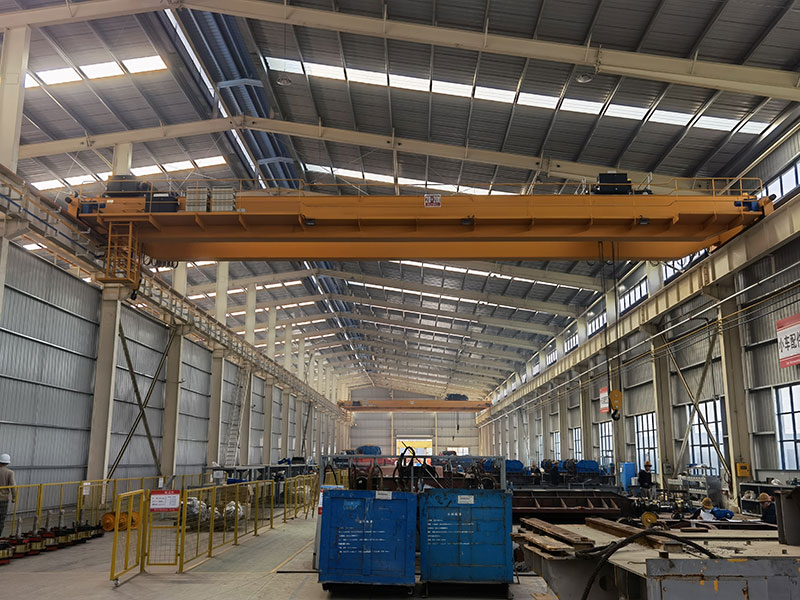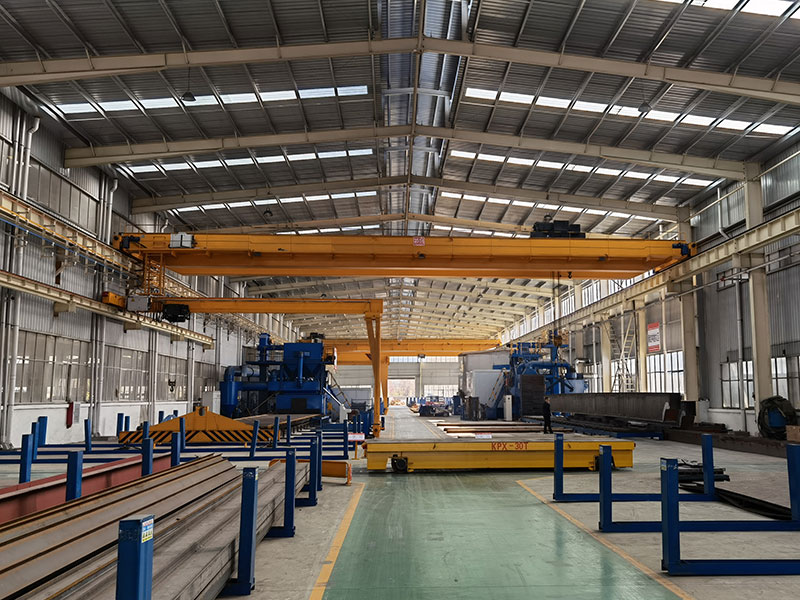Overhead travelling cranes play a pivotal role in material handling and industrial processes across various sectors. These cranes are known for their ability to efficiently lift and transport heavy loads within a facility, optimizing productivity and ensuring safety. Among the different types of overhead cranes, the double girder overhead travelling crane stands out due to its enhanced lifting capacity and versatility. However, selecting the right double girder overhead travelling crane requires careful consideration of various factors to ensure optimal performance and safety.
Understanding Double Girder Overhead Travelling Cranes
A double girder overhead travelling crane consists of two horizontal girders that support the trolley and hoist unit, allowing for increased load capacity and better stability compared to single girder cranes. These cranes are commonly used in industries such as manufacturing, construction, steel, and shipbuilding, where heavy loads need to be lifted and transported over a significant span.

Key Selection Considerations
1. Load Capacity and Span:
The most fundamental aspect of selecting a double girder overhead travelling crane is determining the anticipated load capacity and the span it needs to cover. A clear understanding of the heaviest load that will be handled and the distance it needs to travel helps in selecting the appropriate crane with the right lifting capacity and span.
2. Duty Class:
Cranes are designed to operate under different duty cycles, which determine the frequency and duration of crane usage. The duty class ranges from light to heavy-duty, and selecting the appropriate class depends on factors like the number of lifts per hour, the duration of each lift, and the overall operating conditions. Choosing the right duty class ensures the crane’s longevity and efficient operation.
3. Hoist and Trolley Configuration:
The hoist and trolley unit is a critical component of the crane, responsible for lifting and moving the load. Depending on the application, you may need specialized hoists, such as those designed for precise positioning or high-speed lifting. Additionally, selecting the appropriate trolley configuration (top-running or under-running) depends on the available space and operational requirements.
4. Environmental Factors:
Consider the environmental conditions in which the crane will operate. Factors such as temperature extremes, humidity, dust, and corrosive substances can impact the crane’s performance and durability. Choosing appropriate materials, coatings, and protection measures ensures the crane’s longevity in challenging environments.
5. Safety Features:
Safety is paramount in any industrial setting. Double girder overhead travelling cranes should be equipped with essential safety features such as overload protection, emergency stop buttons, limit switches, and collision avoidance systems. These features prevent accidents, protect the equipment, and safeguard personnel.
6. Power Supply and Controls:
Selecting the right power supply (cable reel, festoon system, conductor bars) and control options (pendant control, radio remote control, cabin control) is crucial for smooth crane operation. The choice depends on factors like the crane’s movement range, the operator’s comfort, and the facility’s layout.

7. Structural Considerations:
The structural integrity of the building or supporting structure plays a vital role in crane selection. The building should be able to withstand the additional load imposed by the crane. Structural engineers should assess the building’s capacity to ensure safe crane installation.
8. Maintenance and Serviceability:
Regular maintenance is essential for the efficient and safe operation of any machinery. When selecting a crane, consider factors such as ease of maintenance, availability of spare parts, and the crane manufacturer’s reputation for after-sales service.
9. Budget and Lifecycle Costs:
While upfront costs are a consideration, it’s important to factor in the crane’s lifecycle costs, including maintenance, repairs, and potential downtime. Investing in a high-quality crane that meets your requirements might have a higher initial cost but can result in long-term savings.
10. Regulations and Standards:
Different industries and regions have specific regulations and standards that dictate crane design, installation, and operation. Ensure that the selected crane complies with relevant safety and operational standards in your area.
Conclusion
Selecting the right double girder overhead travelling crane is a significant decision that impacts a facility’s efficiency, safety, and productivity. Careful consideration of factors such as load capacity, duty class, environmental conditions, safety features, and maintenance requirements is crucial to making an informed choice. Collaborating with overhead crane manufacturers and industry experts can provide valuable insights and ensure that the chosen crane aligns with your specific operational needs. By adhering to these considerations, industries can make an investment that enhances their material handling capabilities and contributes to their overall success.